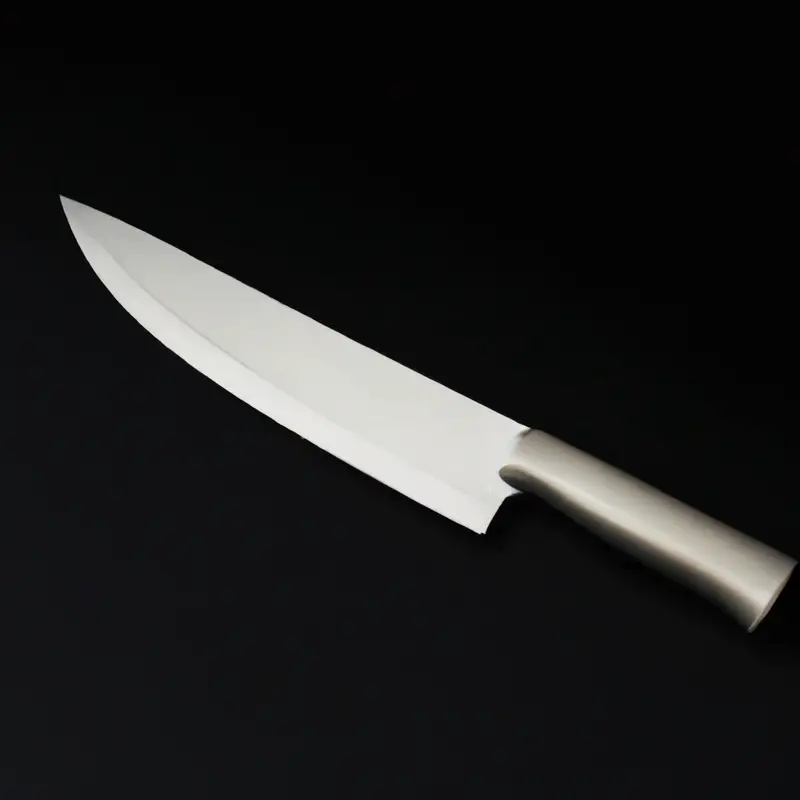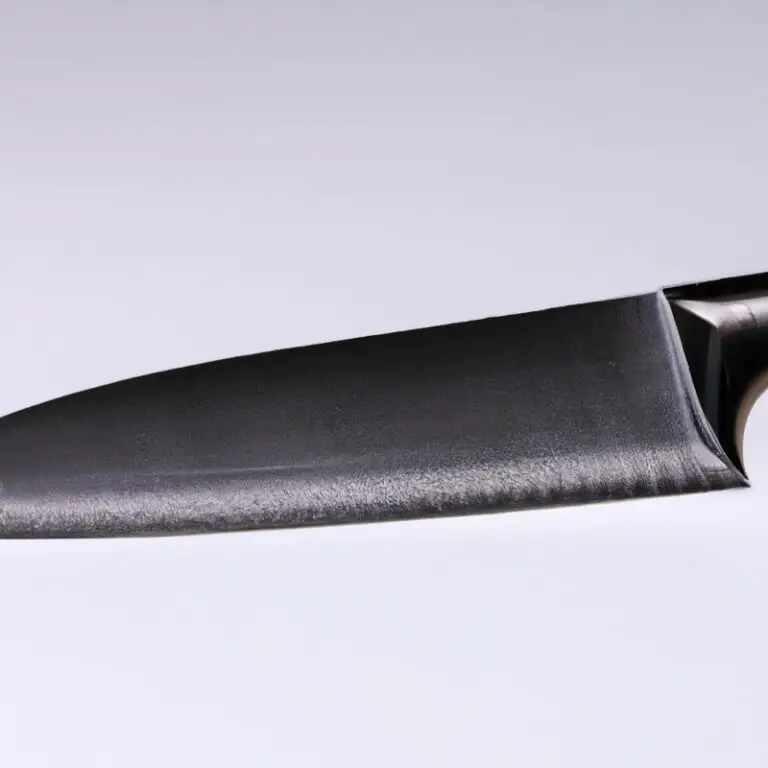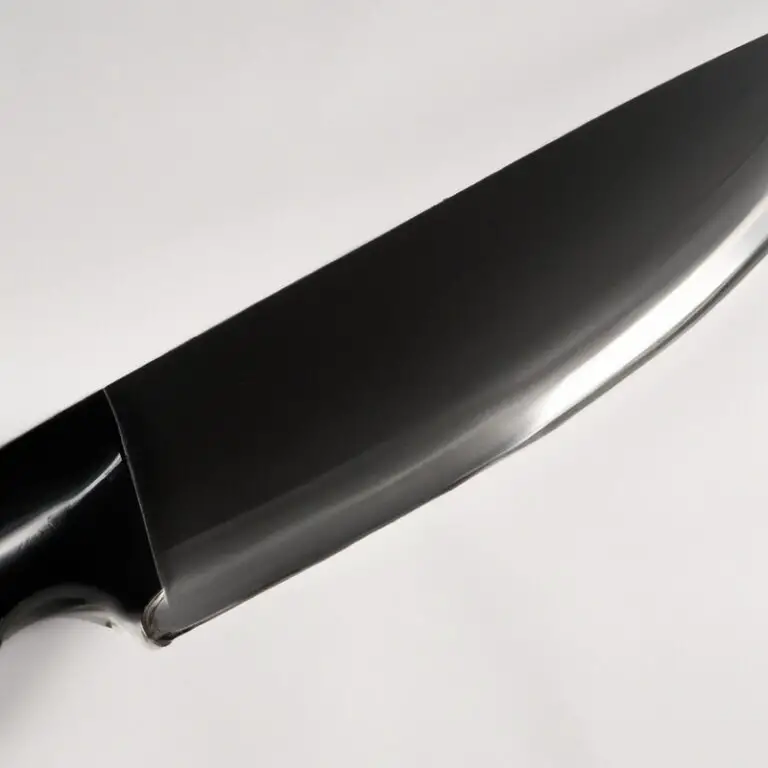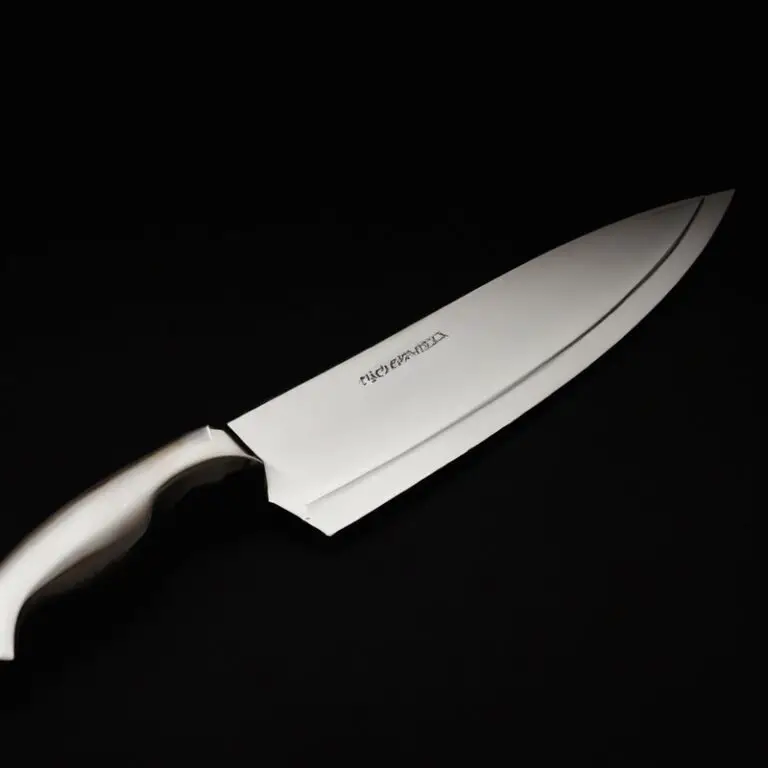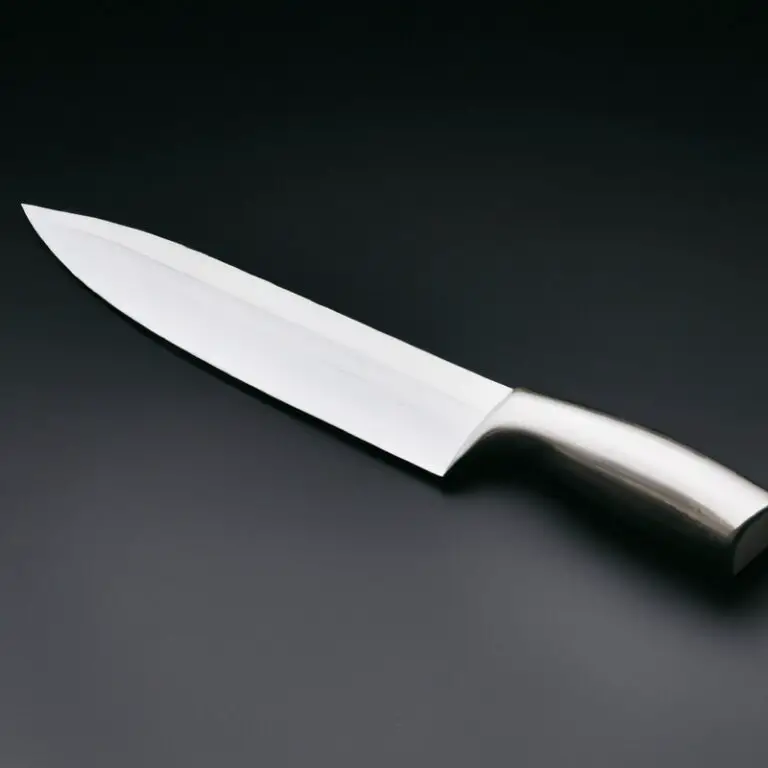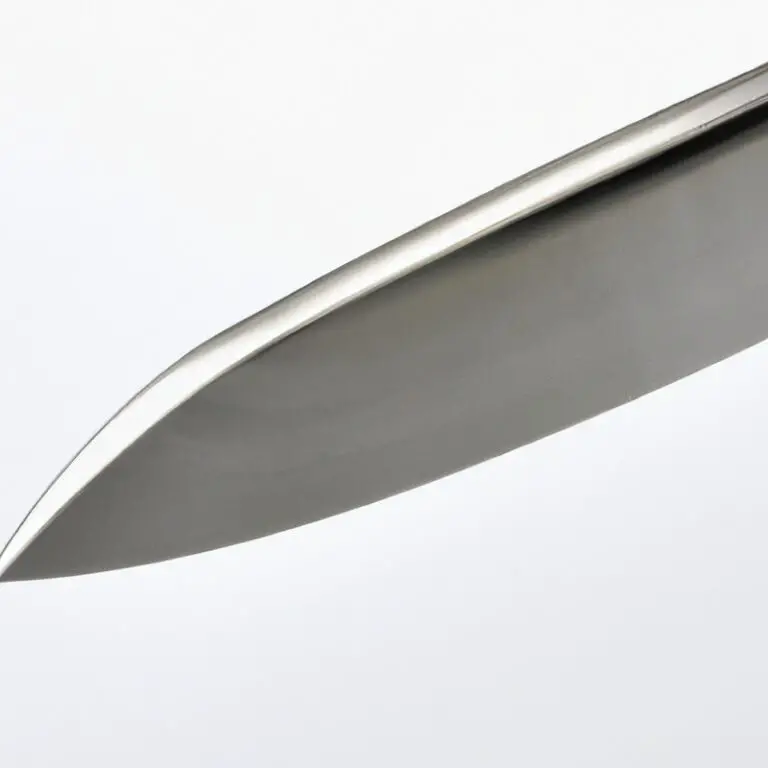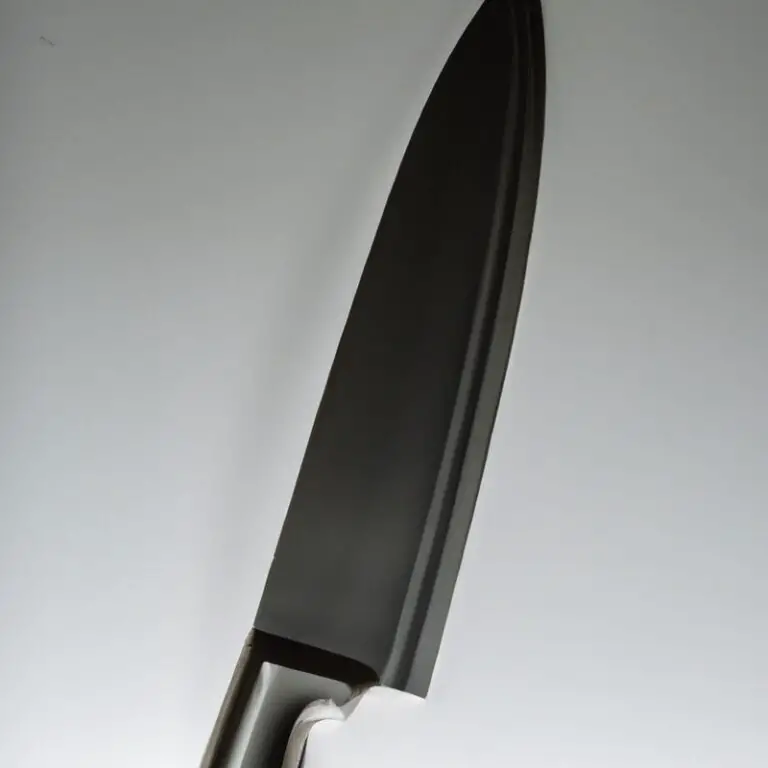How To Chop Ginger With a Santoku Knife? Quick Tips
Key Takeaways:
- Use a Santoku knife with a sharp blade for efficient ginger chopping.
- Peel the ginger using a vegetable peeler or the back of a spoon before chopping.
- Cut the ginger into thin slices before chopping into smaller pieces, using a rocking motion.
- Practice proper knife handling techniques and exercise caution while using sharp knives.
Have you ever struggled with chopping ginger into neat and even pieces? If so, you’re not alone.
Ginger can be tough to chop, but using the right tool can make all the difference.
Enter the Santoku knife, a versatile and efficient kitchen tool that can make your ginger-chopping woes a thing of the past. In this article, I’ll cover everything you need to know about chopping ginger with a Santoku knife.
From understanding the knife’s anatomy to perfecting your chopping technique, I’ll share tips and tricks that will take your ginger game to the next level.
| Ingredients/Tools | Steps |
| Ginger root | Peel the ginger root using the back of a spoon or a vegetable peeler |
| Santoku knife | Hold the ginger root steady with one hand and make vertical cuts along its length with the Santoku knife |
| Cutting board | Turn the ginger root 90 degrees and make horizontal cuts across its length |
| Repeat the vertical and horizontal cuts until the ginger is finely diced to your desired consistency |
Advantages of chopping ginger with a Santoku knife
There are several advantages to chopping ginger with a Santoku knife. The sharp blades of a Santoku knife make it easier to chop ginger quickly and efficiently, without the need for excessive force.
The design of the Santoku knife ensures that it is well-balanced and effortless to handle, allowing you to have complete control over your cuts, which can make a significant difference in achieving consistency in your sliced ginger.
Moreover, the flat edge of the Santoku knife makes it ideal for slicing and dicing ginger, and the wide blade is useful for scooping up the ginger slices from the cutting board. The unique shape and design of a Santoku knife enable you to chop other ingredients besides ginger, making it the perfect all-purpose knife.
In summary, the benefits of chopping ginger with a Santoku knife include fast and efficient cutting, better control, and consistent results in your recipes.
Additionally, the Santoku knife’s versatile design allows it to be used for other ingredients and makes it a valuable tool in the kitchen for preparing a wide range of dishes.
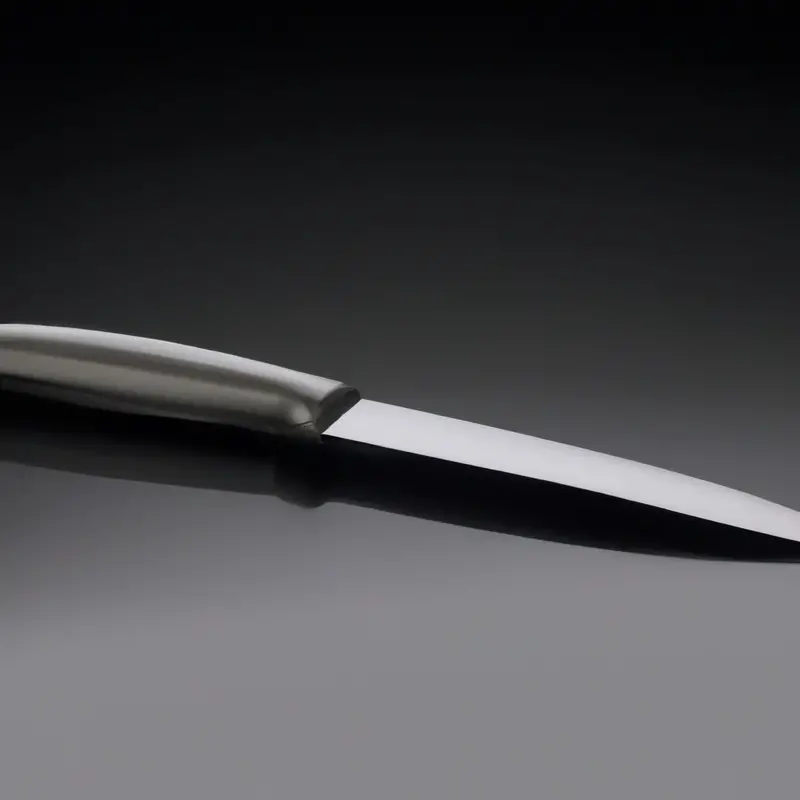
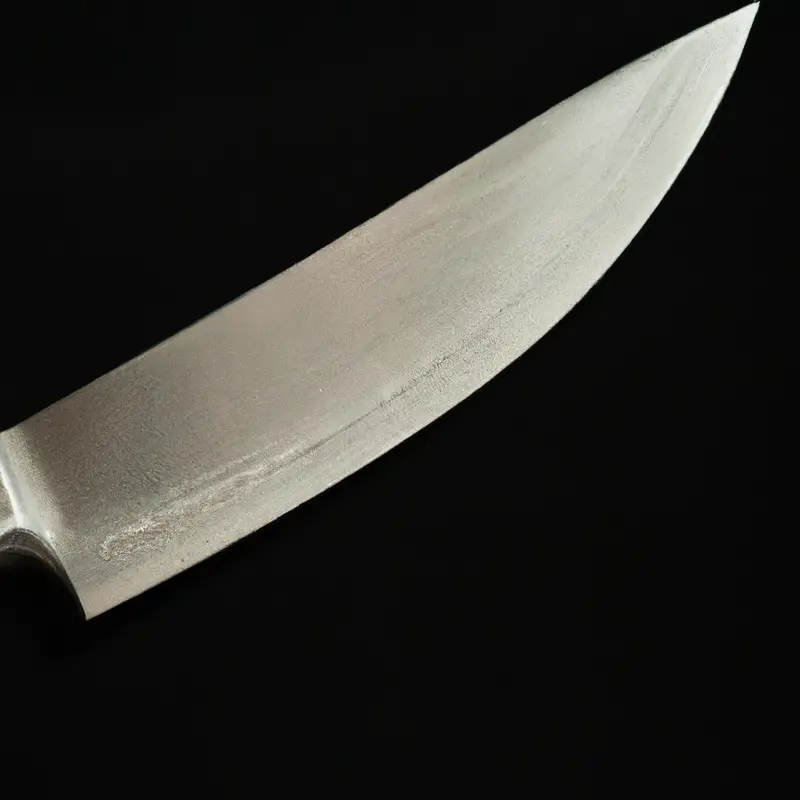
Understanding the anatomy of a Santoku knife
A Santoku knife is a multi-purpose Japanese knife that has become popular in Western kitchens due to its versatility. The word “Santoku” literally translates to “three virtues” or “three uses,” which refers to its ability to chop, slice, and dice.
The blade of the Santoku knife typically ranges from 5 to 8 inches in length and is wide, making it easier to scoop up chopped ingredients.
Its blade is shorter and wider than a traditional Western chef’s knife, and it is also thinner and lighter, allowing for precise and controlled chopping. The blade of a Santoku knife is also slightly curved, which allows for a smooth rocking motion when chopping.
Understanding the anatomy of a Santoku knife is crucial for safe and efficient use.
The handle should fit comfortably in your hand and provide a secure grip. The blade should be sharp, and the edge should be honed at a consistent angle for maximum performance.
Finally, the tang, or the extension of the blade into the handle, should be securely attached to the handle for stability and balance.
Preparing the ginger for chopping with a Santoku knife
Before you start chopping ginger with a Santoku knife, there are a few things you need to do to prepare the ginger. First, select a fresh ginger root that feels firm and heavy for its size.
Then, use a vegetable peeler or a small spoon to remove the skin from the ginger root.
You can also use the edge of a spoon to scrape it off. Next, cut off any rough or uneven parts of the ginger root using a chef’s knife.
Then, slice off both ends of the ginger to create a flat surface.
This will help keep the ginger stable while you are slicing it with a Santoku knife. Finally, cut the ginger into thin slices or small matchsticks depending on your recipe.
If you’re unsure of the size, aim for ⅛- to ¼-inch thicknesses or 1-inch lengths for the matchsticks.
Remember to grip the Santoku knife firmly and use a back-and-forth rocking motion as you chop the ginger. This gradual chopping technique helps to crush the fibers, making it easier to add flavor-enhancing marinades, sauces, or dressings to your recipe.
Different chopping techniques for ginger with a Santoku knife
There are several ways to chop ginger with a Santoku knife, depending on the desired size and shape of the ginger pieces.
- Slice: Hold the ginger firmly and slice it lengthwise into thin, even slices.
- Julienne: After slicing the ginger lengthwise, stack several slices and cut them into thin, uniform matchstick-sized pieces.
- Mince: Finely chop ginger by first slicing it thinly, then chopping it up further until it becomes a fine paste.
- Grate: Use the rough side of a grater to grate ginger into small pieces, which can then be pressed to extract the juice.
Remember to use a sharp knife and apply even pressure to achieve clean, precise cuts. It’s essential to practice your technique to avoid any slips or cuts.
Experimenting with different techniques can also lead to varying textures and flavors when cooking with ginger.
The importance of using a sharp Santoku knife
Using a sharp Santoku knife is essential when it comes to chopping ginger. A sharp knife will reduce the risk of accidents and injuries while making the chopping process smoother and more efficient.
A dull knife can lead to uneven cuts, which can compromise the flavor and texture of the ginger.
Additionally, a dull knife requires more force to cut through the ginger, which can tire out the wrist and hand muscles. By keeping a sharp Santoku knife, you can ensure a hassle-free and enjoyable ginger-chopping experience.
Remember to sharpen your blade regularly and hone it before each use to maintain its sharpness.
Safety measures to consider while using a Santoku knife to chop ginger
Safety measures are crucial to consider when using a Santoku knife to chop ginger. Firstly, always ensure the knife is sharp, as dull blades can slip and cause injuries.
Secondly, keep your fingers away from the blade by using the pinch grip, placing your thumb behind the blade and your fingers on the handle.
Thirdly, use a stable cutting board to prevent the ginger from sliding around while chopping, reducing the risk of injuring yourself. Finally, keep your non-dominant hand in a claw position to protect your fingers while chopping the ginger.
By following these safety measures, you can chop ginger effortlessly and safely using a Santoku knife.
How to maintain the sharpness of your Santoku knife while chopping ginger
To maintain the sharpness of your Santoku knife while chopping ginger, be sure to follow these tips:
- Use a cutting board made of soft material, such as wood or plastic.
- Avoid cutting hard surfaces, such as a plate or countertop.
- Clean the blade of your knife after each use.
- Hone your blade regularly with a honing steel.
- Sharpen your blade as needed using a sharpening stone or professional sharpening service.
By following these simple steps, you can ensure that your Santoku knife remains sharp and ready for all your ginger chopping needs.
Tips and tricks for chopping ginger with a Santoku knife
Here are some tips and tricks for chopping ginger with a Santoku knife:
- Peel the ginger before chopping it.
- Use a sharp Santoku knife to avoid uneven cuts.
- Employ the rocking motion technique while chopping the ginger to achieve even pieces.
- Cut against the grain of the ginger to reduce stringiness.
- Use a damp cloth or paper towel to stabilize the ginger while chopping.
- Be careful not to cut yourself while chopping ginger with a sharp knife.
- Practice makes perfect, so keep practicing to improve your ginger chopping skills with a Santoku knife.
Pairing ginger with food items chopped with a Santoku knife
Pairing ginger with food items chopped with a Santoku knife is a great way to enhance the flavor and nutrition of your dishes. Ginger adds a zesty, slightly spicy flavor to food items, and when chopped with a Santoku knife, it releases the essential oils and flavors perfectly.
Santoku knives are ideal for chopping ginger, as they are sharp and thin, allowing you to make precise cuts.
When paired with stir-fries, steamed or grilled vegetables, and meats, ginger adds a unique dimension to the dish. Additionally, pairing ginger with seafood can produce a delightfully complex flavor, as the sweetness of the seafood is balanced with the spiciness of ginger.
Ginger also works well in desserts, adding a warm and spicy flavor to sweet treats.
Ginger can also be paired with tea, smoothies, and juices, providing an added boost of flavor and nutrition. You can experiment with different combinations by using a Santoku knife to chop ginger in varying sizes and shapes.
In summary, pairing ginger with food items chopped with a Santoku knife is a great way to add flavor and nutrition to your meals.
The possibilities are endless, and with a sharp Santoku knife, you can make precise cuts that release the full flavor and aroma of this delicious spice.
Experimenting with different recipes using ginger and Santoku knife
Experimenting with different recipes using ginger and a Santoku knife is an excellent way to enhance the flavors in your dishes. Adding ginger to your stir-fries, soups, and curries can give them an exciting and aromatic taste.
Chopping ginger with a Santoku knife can also help you achieve a precise cut, ensuring that every piece retains its flavor and adds the right texture to your dish.
Some of the popular recipes that you can experiment with ginger include ginger tea, gingerbread, ginger ale, ginger cookies, and ginger caramel. Use your Santoku knife to julienne, dice, mince, or grate the ginger, depending on the recipe’s requirements.
The sharp blade will allow you to cut through the fibrous root easily, making your cooking experience more enjoyable and efficient.
In summary, using a Santoku knife to chop ginger opens up a world of culinary possibilities, adding a unique and delightful twist to any dish.
Final Verdict
Chopping ginger with a Santoku knife can be an extremely rewarding experience once you understand the proper techniques and safety measures. By using a sharp Santoku knife and following the steps outlined in this article, you can ensure efficient and accurate results every time.
Remember, the key is to practice and experiment with different recipes to fully unleash the potential of this versatile ingredient.
By incorporating ginger into your cooking repertoire and utilizing the precision of a Santoku knife, you can elevate your dishes to the next level and impress your guests with your culinary skills. Trust the expertise presented in this article and take the first step in becoming a ginger-chopping pro!

